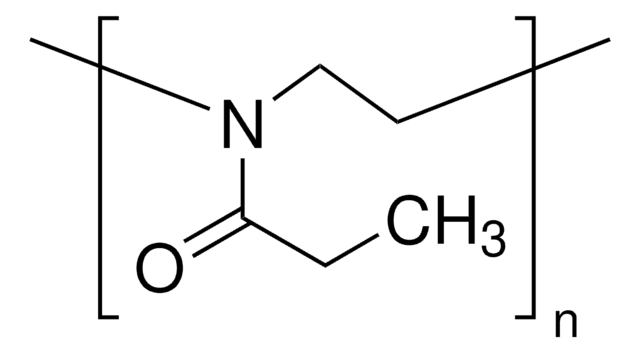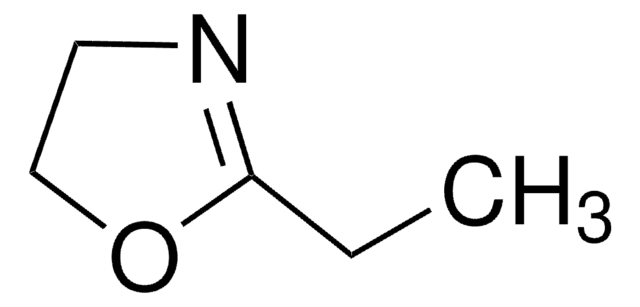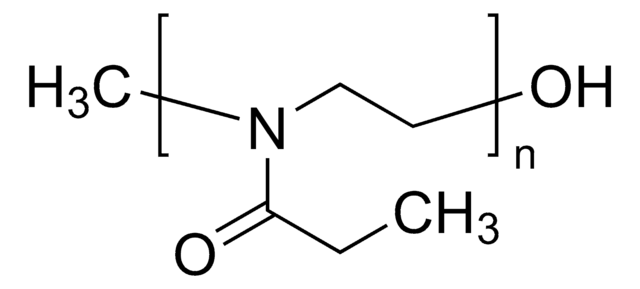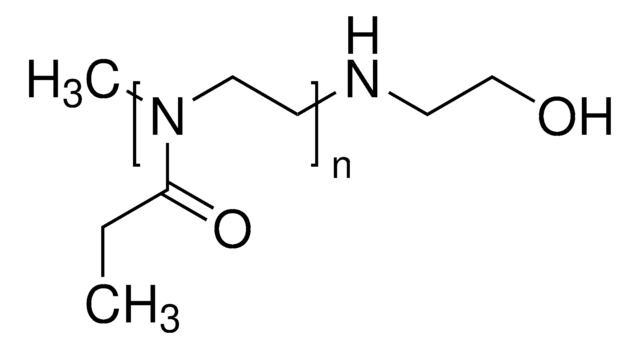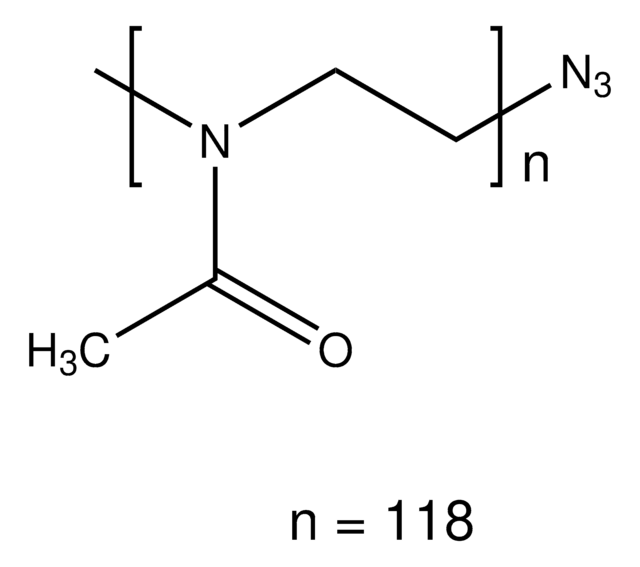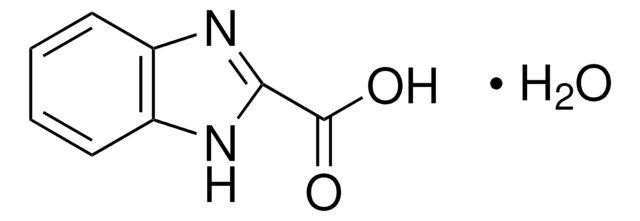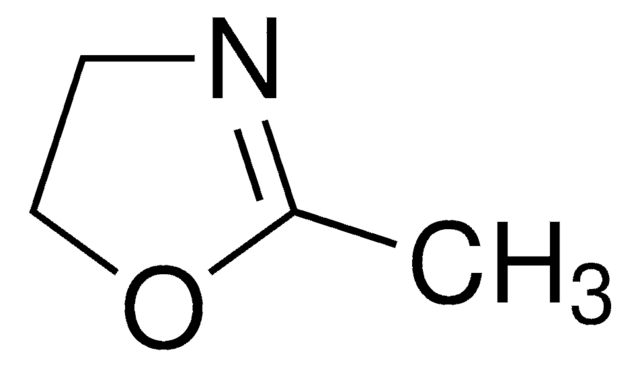740713
Poly(2-ethyl-2-oxazoline)
average Mn 5,000, PDI ≤1.3
Sinonimo/i:
PEOX Polymer
About This Item
Prodotti consigliati
Cerchi prodotti simili? Visita Guida al confronto tra prodotti
Categorie correlate
Applicazioni
- Two-photon polymerized poly (2-ethyl-2-oxazoline) hydrogel 3D microstructures: This study presents a novel hydrogel platform based on poly(2-ethyl-2-oxazoline) that allows for the creation of 3D microstructures with tunable mechanical properties, suitable for tissue engineering applications (Czich et al., 2020).
- High definition fibrous poly (2-ethyl-2-oxazoline) scaffolds: This research explores the use of melt electrospinning writing to create high-definition scaffolds from poly(2-ethyl-2-oxazoline), highlighting its potential for creating precise and customizable structures in biomedical applications (Hochleitner et al., 2014).
- Synthesis and evaluation of methacrylated poly (2-ethyl-2-oxazoline): This study focuses on the synthesis of methacrylated poly(2-ethyl-2-oxazoline) for use as a mucoadhesive polymer, demonstrating its potential in enhancing nasal drug delivery systems (Shan et al., 2021).
- High-definition poly (2-ethyl-2-oxazoline) scaffolds: Investigates the use of melt electrospinning writing to fabricate scaffolds from poly(2-ethyl-2-oxazoline), a polymer that offers promise due to its high melting temperature and hydrophilic nature, suitable for various biomedical applications (Hochleitner et al., 2014).
Codice della classe di stoccaggio
11 - Combustible Solids
Classe di pericolosità dell'acqua (WGK)
WGK 3
Punto d’infiammabilità (°F)
Not applicable
Punto d’infiammabilità (°C)
Not applicable
Scegli una delle versioni più recenti:
Possiedi già questo prodotto?
I documenti relativi ai prodotti acquistati recentemente sono disponibili nell’Archivio dei documenti.
Articoli
Poly(2-oxazoline)s (POx) can be viewed as conformational isomers of polypeptides. They are synthesized via living cationic ringopening polymerization (LCROP) of 2-oxazolines and were almost simultaneously discovered in 1966 by the groups of Litt, Tomalia, Fukui and Seeliger.
The introduction of polymers into the biomedical field has opened new avenues in tissue engineering, implant design, biosensing, and drug delivery.
Wide range of functional polymers for biomedical applications have been synthesized and structurally characterized. Several classes of polymers including biodegradable polymers, hydrophilic & amphiphilic polymers, and stimuli responsive polymers have been prepared using controlled and directed functionalization via "living" polymerization such as RAFT, ionic and ring opening polymerization. Selected polymers have been studied for their structure-properties relationship. "
Global Trade Item Number
| SKU | GTIN |
|---|---|
| 740713-5G | 4061832884400 |
Il team dei nostri ricercatori vanta grande esperienza in tutte le aree della ricerca quali Life Science, scienza dei materiali, sintesi chimica, cromatografia, discipline analitiche, ecc..
Contatta l'Assistenza Tecnica.